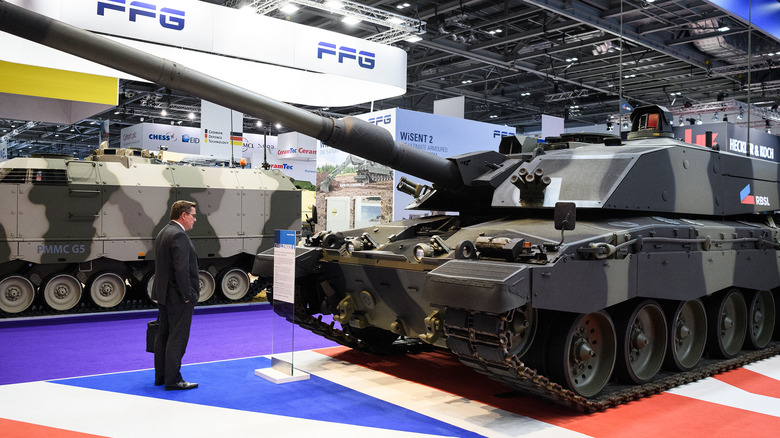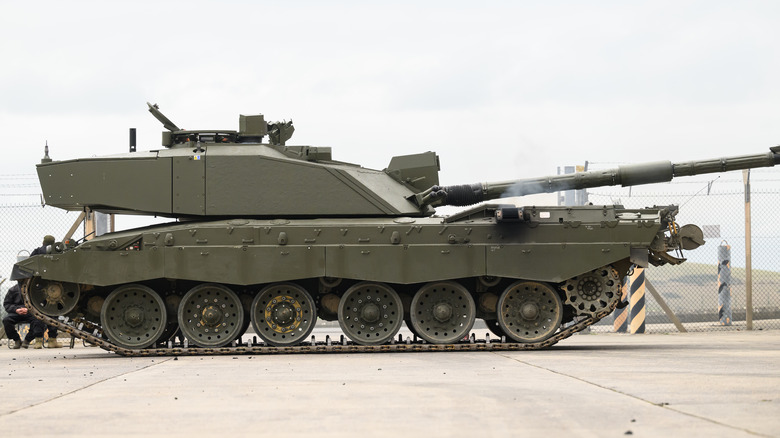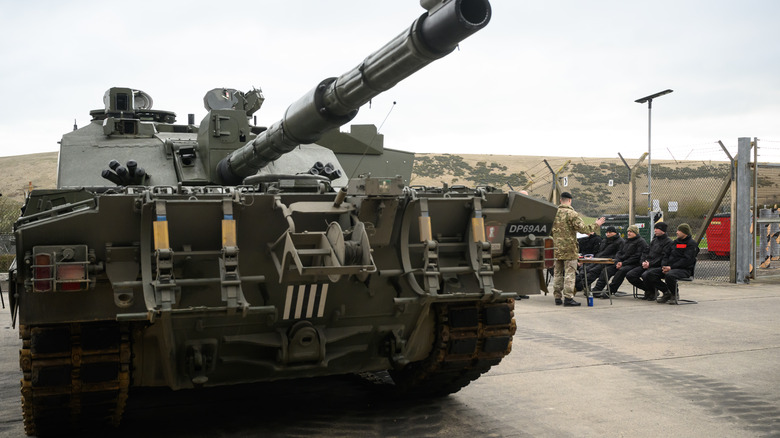What Makes The UK's Challenger 2 Tank So Special
Some tanks have sacrificed heavier weapons for increased maneuverability. Others have even been able to float, such as the Soviet Union's three-ton T-37, which was introduced in the early 1930s. The British Challenger 2, however, sets itself apart by doubling down on everything that may be expected of a modern tank: Incredible defensive capacities and the firepower to back all of that up.
Here's a closer look at the creation of the Challenger family, its potential future, and exactly what makes the Challenger 2, in particular, such a formidable opponent to face on the battlefield, up there with the likes of the M1 Abrams.
The Challenger 1 was conceived as an upgrade of the British Chieftain tank. The Chieftain's primary shortcoming was its lack of armor, leaving it vulnerable to opposing tank fire. The British developed so-called Stillbrew armor as a sort of on-the-go patch for this, but a far better solution was still to come: the Challenger family.
Challenger 1 was reinforced with Chobham Armor, a secretive blend of metal and lightweight textiles that rendered it more resilient than the previous model. The Challenger 1 entered service in 1983 and, over its lifetime, would receive offensive boons such as the fearsome cannon CHARM. When it was retired in late 2000, the Challenger 2 would take up its mantle as a mighty weapon and nigh-immovable object with aplomb.
The introduction of the Challenger tank family
Challenger 2 tanks, developed by the former Vickers Defence Systems, were first fielded by the UK in 1998. Within four years, almost 400 of them had joined the force and were wielded by the Oman Army, too. The powerful arsenal of the Challenger 2 is notable, but perhaps even more so is its defensive track record.
In the animal kingdom and the world of military vehicles alike, it's a sad reality that even the sturdiest known armor will occasionally be penetrated. What matters, though, is how difficult it can be to accomplish this and how scarce such events can be. This is particularly evident in the case of the Challenger 2.
Speaking to Forces News (via YouTube), Chief of the General Staff General Sir Patrick Sanders declared the model to be "... in many respects, one of the most advanced tanks in the world, and it's certainly the best-protected." He went on to note that this was made clear by the fact that when a Challenger 2 was destroyed in Ukraine (in September 2023), "the crew all got out."
A defensive titan
The formidable Challenger 2's main gun is a 120mm L3OA1 with extraordinary capacities. In a social media video by Defense Of Ukraine in September 2023, one crew member declared the model to be "like a sniper rifle among tanks," saying it hit a target from over five kilometers. Its accuracy is bolstered by a rangefinder with laser capabilities, other sophisticated targeting systems, and a more traditional sight that can be used as a backup.
The unique tank's armor system is an advanced version of the Chobham known as Dorchester. Though the Challenger 2 hasn't been widely deployed, it seems evident that Dorchester must be very potent indeed: Before the one destroyed in Ukraine, only one was ever destroyed, and this was by mistaken targeting in 2003, almost an entire decade before the tank was introduced. Ammunition storage is also spaced out in the tank, with the intent of reducing the danger.
Challenger 2 remains in service, and the family's unique capabilities will be further enhanced. As the 2021 Ministry of Defence command paper "Defence In A Competitive Age" noted, "the Army will invest around £1.3bn in our armored capability by upgrading 148 of our main battle tanks to ensure the Challenger III will become one of the most protected and most lethal in Europe."


